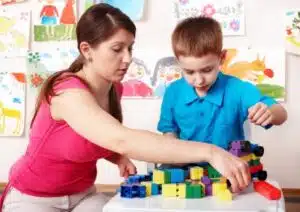There’s a young girl in elementary school always day dreaming in her own world and taking home lower test grades. During parent teacher conferences, the teacher tells her parents that the child needs to make more of an effort, care more about her studies and try to focus.

Now in the same class is a boy who constantly fidgets in his chair, calls out answers and loves to throw things when the teacher turns her back. During parent teacher conferences, the teacher tells his parents that he is a sweet boy who can be disruptive and she has a hunch he should be tested for ADHD.

This makes sense, the boy is constantly disruptive, distracted and runs on a motor— he fits the hyperactive- impulsive subtype of ADHD. But that little girl, quite different from the boy, can fit into the predominantly inattentive subtype of ADHD which is characterized by constant day dreaming, inattention and appearing sluggish. Most people, like the teacher, are looking out for the ADHD predominantly hyperactive and impulsive sub type while forgetting to watch out for the children experiencing ADHD-I (predominantly inattentive).
What is ADHD-I or Inattentive ADHD?
When someone thinks of ADHD, they automatically think of the hyperactive, impulsive child: always on the go, impulsive, loud and disruptive. The predominantly inattentive ADHD child is the opposite: more inattentive, distracted and all in all a quiet day dreamer. Both types of children have trouble paying attention and remaining organized, but this manifest in different ways.
People with the inattentive ADHD subtype experience some of the following symptoms: missing important details, trouble focusing and remaining on tasks, trouble processing new information, and appearing as not listening While more boys are diagnosed with ADHD overall, girls are more likely to have ADHD-I. ADHD-I is diagnosed at older ages amongst children which could mean it has a later onset or that it is overlooked.
People with ADHD-I are more likely to have comorbid learning disorders than the other ADHD subtypes. Moreover, people with ADHD-I are less likely to “grow out” of their ADHD as they approach adulthood compared to the other two subtypes. About 1/3 of the children diagnosed with ADHD lose the diagnosis as an adult and these children are likely to experience predominantly hyperactive-impulsive ADHD or a combination.
Children with ADHD-I are less disruptive in class while children with the other subtypes are more likely to exhibit poor behavioral skills and act out. Children with the impulsive-hyperactive ADHD get in more trouble at school while ADHD-I students’ tend to fall under the radar.
Social functioning in Inattentive ADHD subtype

ADHD impairs functioning across a whole range of processes including social functioning. Children with ADHD-I experience social issues and can have fewer friends or feel ignored. In one study, students in schools were asked to rate their thoughts on peers (some of the peers having ADHD-I or a combination of the subtypes). The ADHD-I students were deemed as shy while the students with a combination of both subtypes of ADHD were known as likely to start fights and arguments.
These studies on children with the different kinds of ADHD have found that ADHD-I children are more shy and passive and children with a combination of subtypes are more aggressive and loud. Children with ADHD-I are less assertive and more social passive while the other children with ADHD are more aggressive and lack self-control. All subtypes of ADHD affect social performance but each sub type affects social interaction differently and must be treated separately.
Treatment Recommendations for ADHD Inattentive Subtype
ADHD-Inattentive subtype has been found to be distinct from ADHD-impulsive/ hyperactive and the combination sub type; therefore, treatment needs to be individualized for this subtype. One study found that behavioral interventions, when coordinated with the parents and teachers, can be successful at targeting specific inattentive symptoms and helping a child socially. Stimulant medication has been found to help children with ADHD-I as it helps their brain focus and allows them to pay attention for longer.
Moreover, people with ADHD-I can try to remove any distractors (like doing important work in a room within no TV/ turning social media off). Also, parents and teachers can give students with ADHD-I clearer instructions and break down tasks into smaller components.

Work Cited